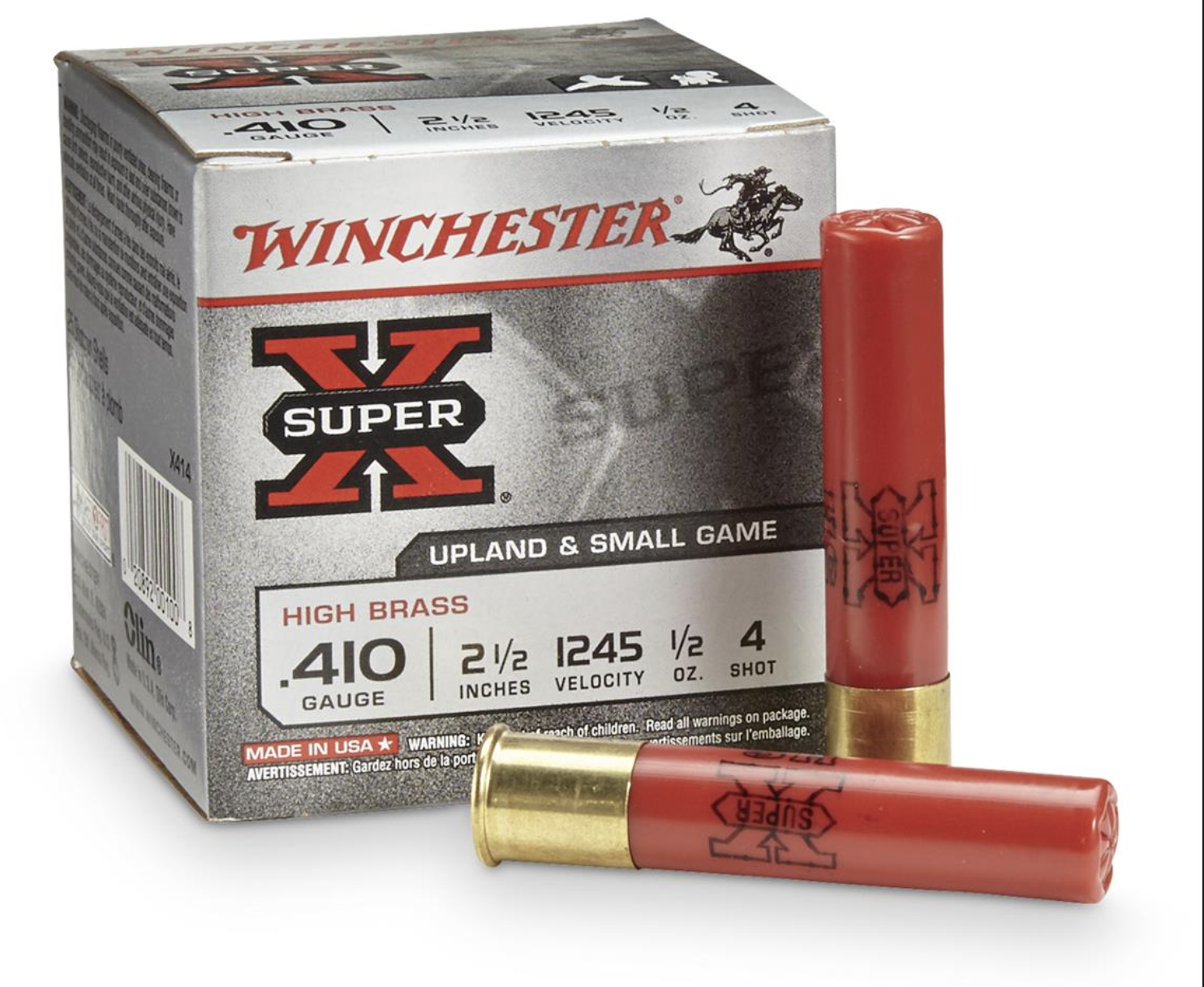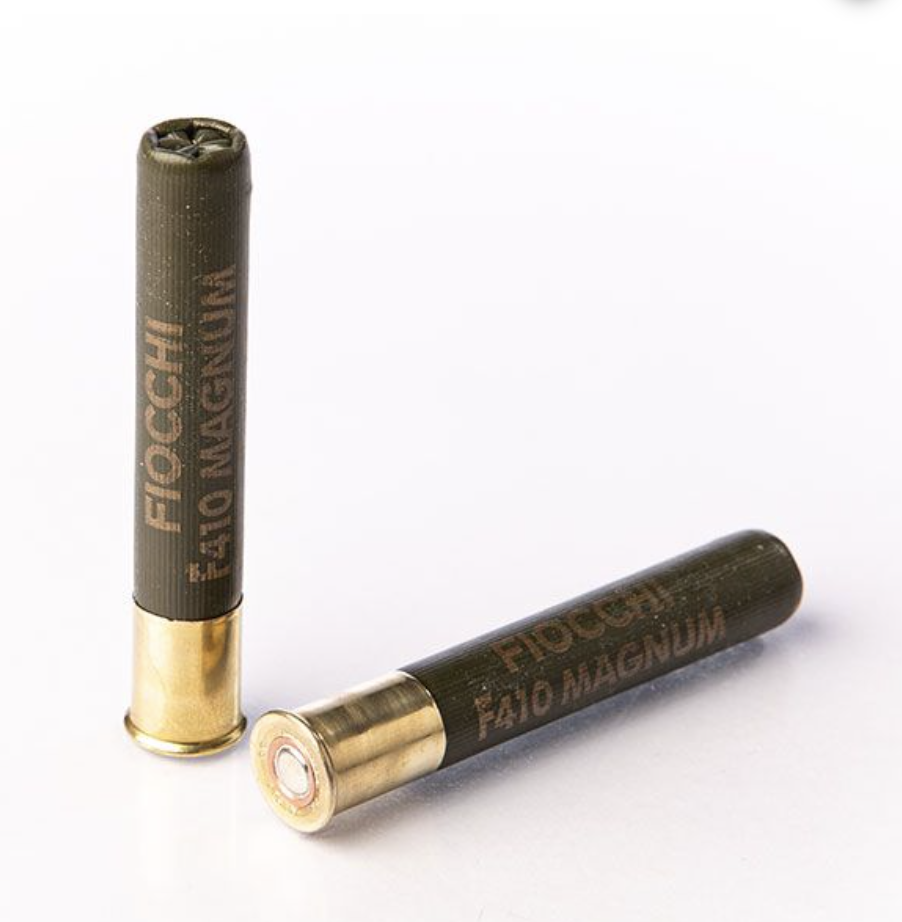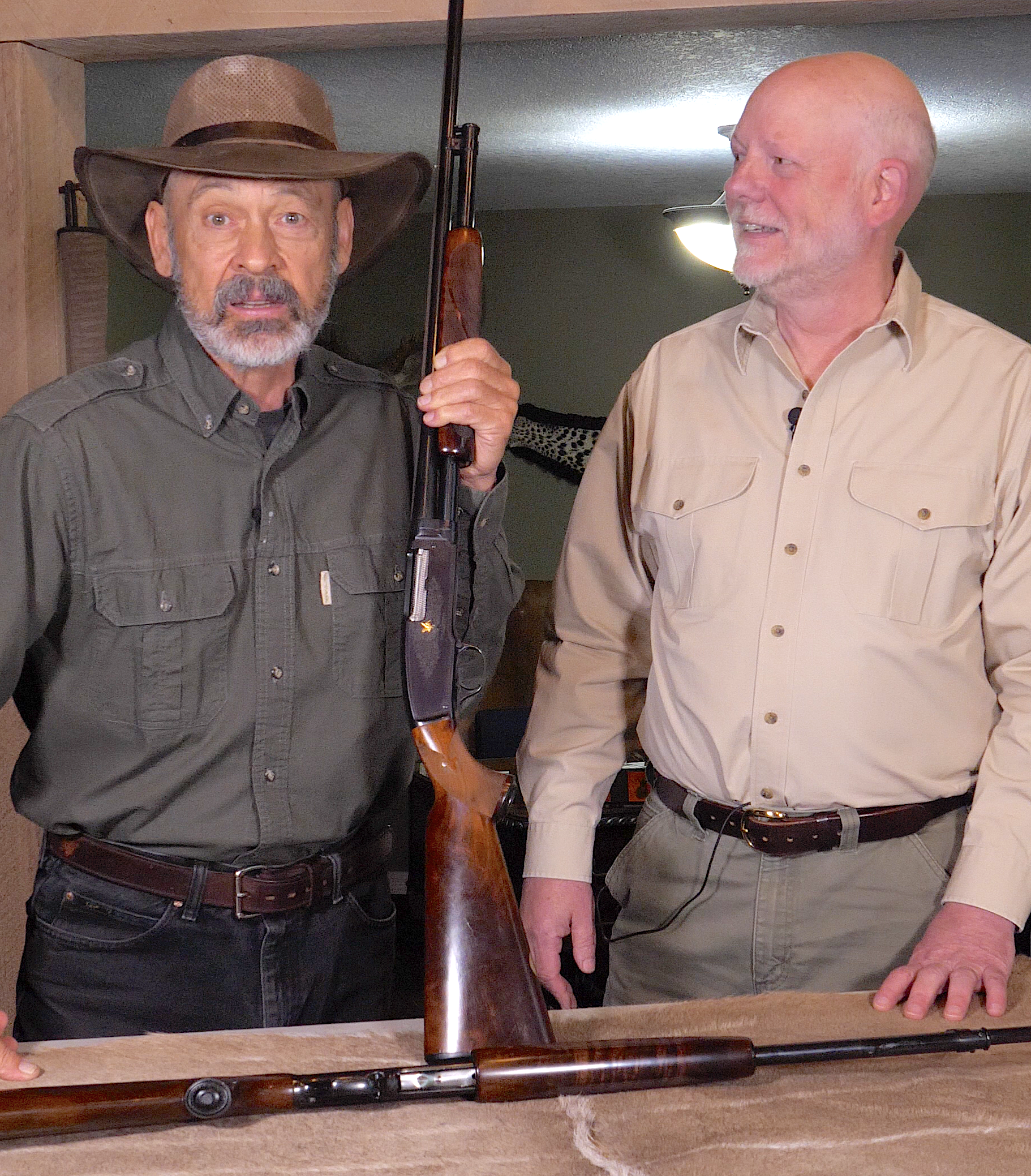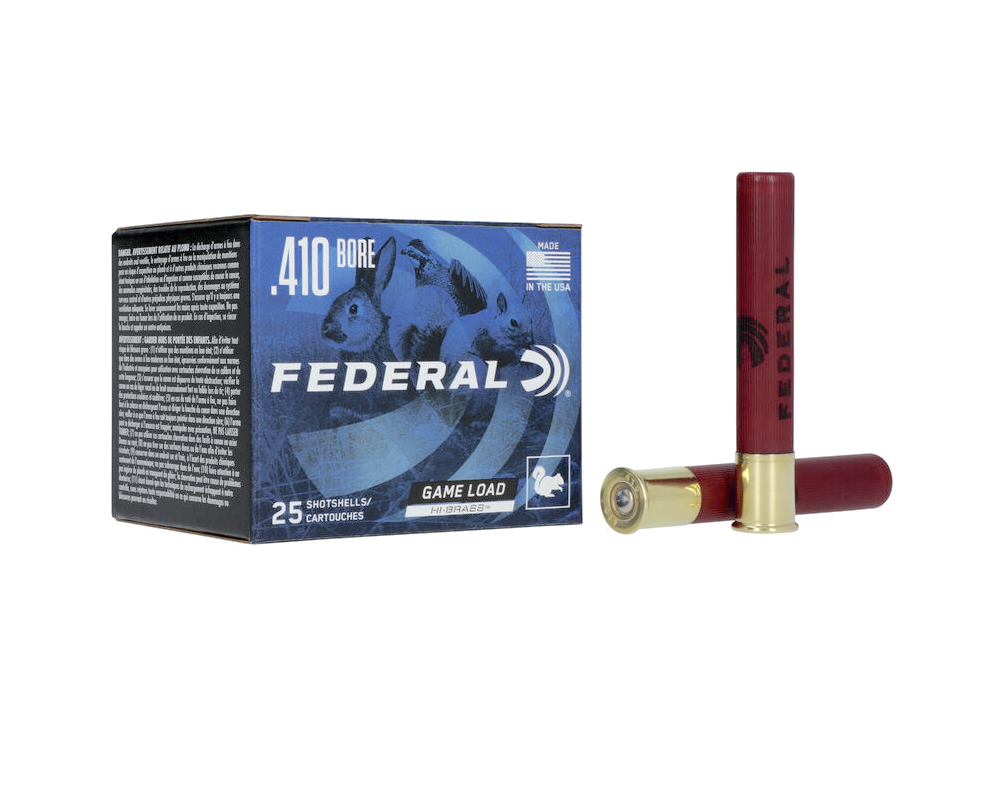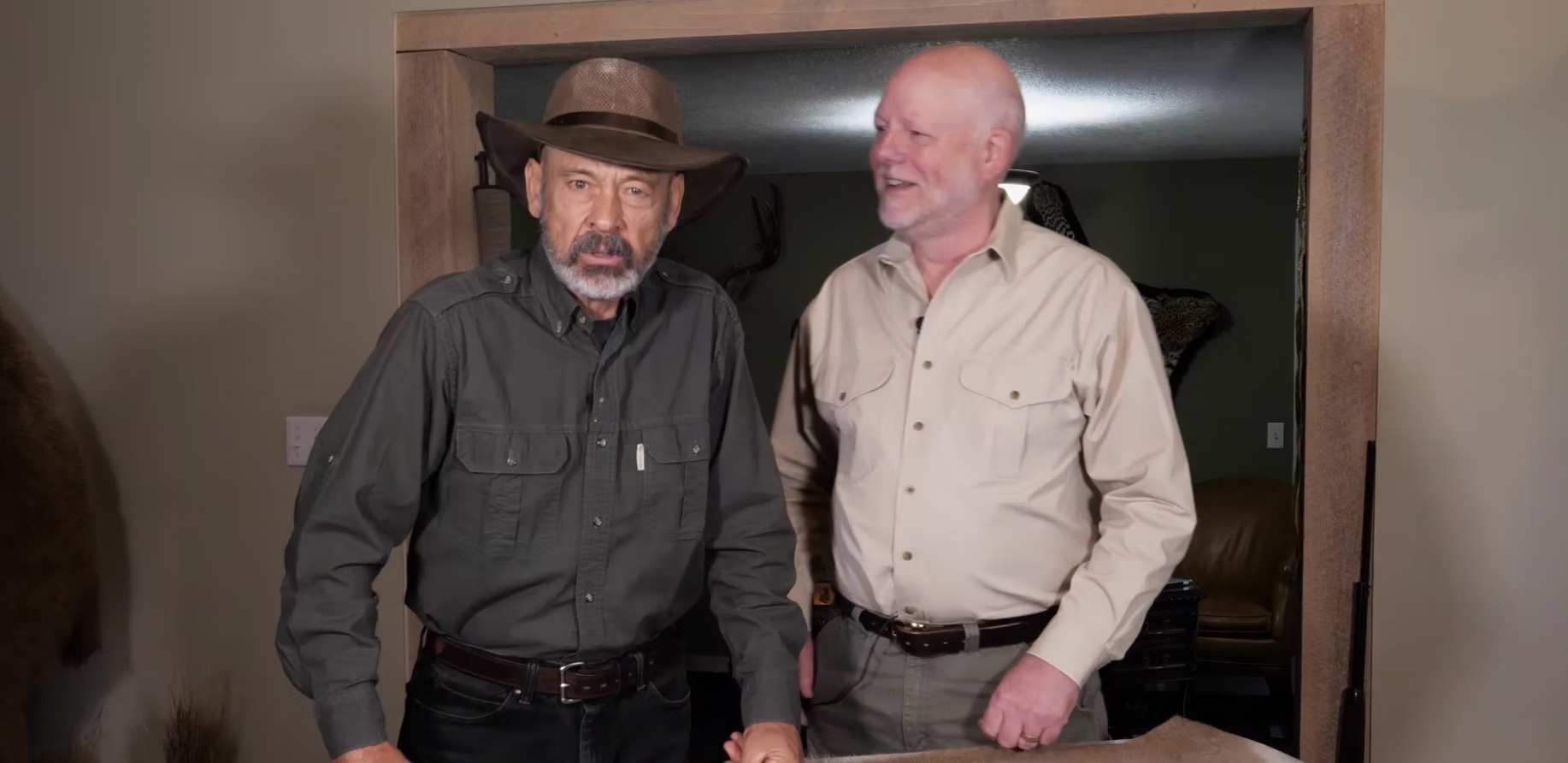Weird 410 “Gauge”, Winchester Model 42 & Video
The .410 is a weird shotgun gauge because it’s not a gauge. It’s a caliber. And a puny, somewhat useless shotgun caliber, according to the “experts.” But that didn’t stop Winchester from building the best pump shotgun ever chambered for it — the surprising Model 42 of 1933.
To fully grasp the allure of Winchester’s Model 42 one must know its parent, the Model 12, and appreciate what was happening in the USA in the 1930s. And then it helps to understand how shotgun gauges are measured and how small the .410 shotshell is.
Let’s start with the Model 12, widely considered the sine qua non of pump action shotguns. It began as a Browning 1893 design that evolved into the M97 pump with external hammer. Winchester engineer Thomas C. Johnson revamped the M97 to make the M12. His biggest “fix” was making the hammer internal. All internal parts were carefully hand fitted so the action flowed like “newly churned butter.” Many referred to the M12 as the Perfect Pump. Johnson then scaled down the M12 to make the M42.
A Winchester M42 pump-action .410 looks like a miniature Model 12 because it is, the action and barrel scaled down for perfect function with the slim .410 shotshell.
Now let’s tackle that “.410 gauge” issue. Shotgun gauge is determined by the number of balls fitting the bore diameter that can be cast from one pound of lead. If that pound melts down to make 10 lead balls to fit the barrel, it’s a 10 gauge. If 20 balls come from that pound of lead, it’s a 20 gauge. And so on. But if you count the balls fitting the 410 you’ll come up with 67 with a few dribbles of lead left over. Some, especially European shell manufacturers, label the .410 a 36 gauge, but that is flat wrong. A true 36 gauge bore diameter would be .506-inch, not .410. Still, gun and ammo makers have never held to strictly precise dimensions when labeling their products.
So why don’t they call the .410 a 67 gauge? I don’t know. I don’t think anyone knows. But we do know that the 410 arose around the end of the 19th century, likely as a garden pest gun. Its bore measures .410-inch in diameter. In comparison a 12 gauge bore measures .725-inch, a 20 gauge .615-inch, a 28 gauge .545-inch. Clearly, the 410 is one tiny shotgun bore. Yet it’s the third best selling shotshell in America. Can you guess why?
The original .410 shotshell was 2 1/2-inches long and held 1/2-ounce of fine shot. It still does. This tiny shotshell was probably designed for taking small game and garden pests. A smaller pellet size than #4 is recommended for good patterning.
Turns out our little 410, despite throwing less than 3/4 ounce of shot, is efficiently effective on barnyard varmints and pests, quail, doves, cottontails, and tree squirrels out to about 25 yards. Originally it was also the least expensive shotgun to feed, shotshells once selling based on actual costs of the materials in them. The 1/2-ounce of shot in the original 2 1/2-inch 410 shell and the 12 grains of powder used to propel it cost a lot less than the 1 1/4-ounce of shot and 25-grains of powder loaded in a 12 ga. Even after the 2 1/2-inch 410 shell was stretched to 3-inches in 1933, it held just 11/16-ounces of shot.
Winston Churchill engraving and gold inlaid snipe add incredible value to this Winchester Model 42 .410 shotgun.
This minimalism, of course, means .410 guns can be light and trim and still recoil hardly at all. A full-house 3-inch shell fired in an 8-pound gun kicks up just 6.6 foot-pounds of recoil energy at 7.3 feet per second recoil velocity. In comparison, a standard 1 1/4-ounce 12 gauge load in an 8-pound gun recoils 33 f-p at 16.3 fps. Even at the M42’s average weight of 6 pounds, recoil is mild.
The 3-inch .410 shell holding 11/16-ounce payload brings the little 410 close to the performance of the 28 gauge throwing 3/4-ounce shot, but the 410’s choke should be IC or M for most consistent patterning.
This 4.5-X lighter recoil is a significant reason to start new shotgunners with a .410. And that might have influenced Winchester’s decision to built its iconic M42. More significant reasons might have been the need for quality .410s integral to skeet shooting competitions. A third reason could have been an effort to keep the company afloat during the economic depression raging in “the Dirty Thirties.”
Life in the USA circa 1933 was difficult. This was one of those dirty years following the Stock Market Crash of ’29. The world economy was still reeling, exacerbated in the U.S.A. by a historic drought across the heartland. High Plains soil, exposed by ill-advised sodbusters, was blowing as far east as New York, taking thousands of homesteaders with it. Others limped to California to harvest their grapes of wrath. This was the era of soup lines, railroad hobos, and public works jobs. Some hardware stores sold 22 Shorts and 12 gauge shells by the piece rather than box. The nation’s sportsmen were hunting for soup lines as often as pheasants. Winchester’s sales couldn’t have been good, so perhaps they may have gambled that wealthy sportsmen who’d survived the stock market crash would add a new Winchester to their collections.
M42 guns stocked and engraved (by Winston Churchill, no less!) as nicely as this one are real collector’s items.
Apparently they did. The trim, lithe, quick little Model 42 sold well enough that Winchester survived and continued making that model until 1963. About 164,800 were built in standard grade, skeet, trap, Deluxe, and Pigeon grades. Barrels could be 26- or 28-inches with solid or vent ribs or plain. Some even came with a Cutt’s Compensator to regular choke.
Winchester’s M42 was the first pump action .410 in history. Shooters discovered it was a natural pointer and easy shooter, ideal for quick shots at quail, ruffed grouse, and any similar-sized bird or mammal flushing within 25 yards or so. As a boy I took my first duck, pheasant, and jackrabbit with a break-action single-shot .410. Later I found out how deadly a Model 42 could be on a Georgia quail plantation. I shucked a borrowed Model 42 to drop four quail from a covey rise. These weren’t wild quail, but the speed and handling characteristics of that little .410 impressed the heck out of me.
It’s been reported that Winchester (under new management by John Olin who’d bought the brand and merged it with his Western Powder Company in 1931) was prepared to introduce the M42 in 1932 but waited because the new 3-inch .410 shell would not be ready for a simultaneous release. Both hit store shelves the next year, and the rest is history. During the next 30 years Winchester would sell 164,800 Model 42s.
Winchester’s M42 was not only the first pump action 410, but the first chambered for the then new 3-inch shell. Placed in a modified choke barrel like this makes it likely one of the best patterning .410s, too.
This is understandable in context because the mid-20th century was the heyday of the pump. Virtually every American gun maker had at least one pump in its line. Winchester’s Model 12 was King of the Shotgun Hill, but Big Red also manufactured slide-action 22 rimfires. A natural pairing would have been a Model 61 pump 22 and Model 42 .410, the small game/upland bird hunters deadly duo. For American-style skeet shooters, Model 12s in 12, 20, and 28 gauges transitioned naturally to the M42 for that part of the competition.
The end for the M42 was brought on by rising manufacturing costs. By 1950 Remington had figured out how to make a reliable pump, the 870, for less. Inexpensive auto-loaders were also gaining fans. Hunters needing a 410 “starter gun” increasingly settled for simple, inexpensive break-actions. Skeet shooters moved toward over/unders, sometimes using barrel inserts to convert them to .410. The delightful Model 42 became too good, too expensive, for its own survival.
Browning brought the Model 42 back in the early 1990s as a limited run of around 6,000 guns made by Miroku in Japan. Most were branded Browning Model 42, but about 850 came with a Winchester roll stamp. These are reportedly as good as the best of the originals, but not being originals, resale is a lot less. If you can find one. Model 42 owners tend to hang on to their guns.
Because the diameter of the rimmed 45 Colt and .410 shotshell are nearly identical, some firearms are chambered to fire both. This is a Howdah 45/410 Pedersoli imported to the USA by ItalianFirearmsGroup. (ifg-na.com) This does not mean you can fire .410 shells in any and all firearms chambered for 45 Colt! The chamber has to be long enough to handle the .410 shell. Be careful! Always match ammo (headstamp) to the caliber designation stamped on the barrel.
The final piece of the .410 puzzle is its ballistic performance. It is compromised by the small bore size as well as light payload. The narrow bore does not allow for efficient flow of large pellets. Think of two people squeezing through a doorway shoulder-to-shoulder. Things tend to jam up. Same with #4 and larger pellets in the little .410 tube. And there are only 93 #4 pellets in an 11/16-ounce load to start with. Step down to #6 pellets, a good options for most upland birds and small game, and 155 will fit in the shell. Settling on 7 1/2 shot means 241 should fill the shell. This is why the 410 is never considered optimum for pheasants. With the right choke, usually improved cylinder or modified, a 410 should deliver a suitably dense pattern of 7 1/2-shot for quail-sized birds out to 30 yards. Pattern spread at that distance should be about 21 to 25 inches. The larger gauges are usually equaling this across a 30-inch zone and often at 35 to 40 yards, so you can see why the .410 — even in a tool as handy as the M42 — demands optimum performance from the shooter.
Most shotshell makers have at least a few .410 offerings in their lines.
Considering all this, if you enjoy quick handling shotguns and efficient shells for close flushing upland birds as well as small game, you won’t find a better pup gun option than the unique Winchester Model 42.
# # #
Watch my video below for an in-depth review of the Winchester Model 42!
We can’t all get our hands on unique guns like this, but there are plenty of great gifts for hunters and firearms enthusiasts. John McAdams on the Big Game Hunting Blog wrote an article about the 101 Best Gifts for Hunters, and RSO TV made the list! Check out the complete list of items on John’s blog.



